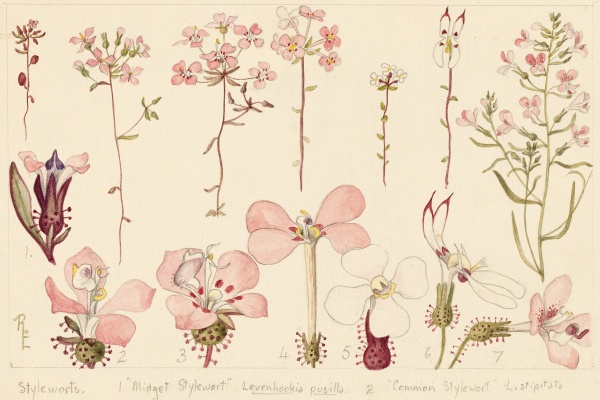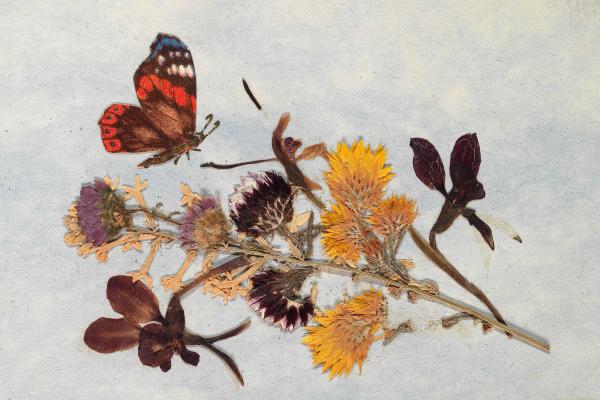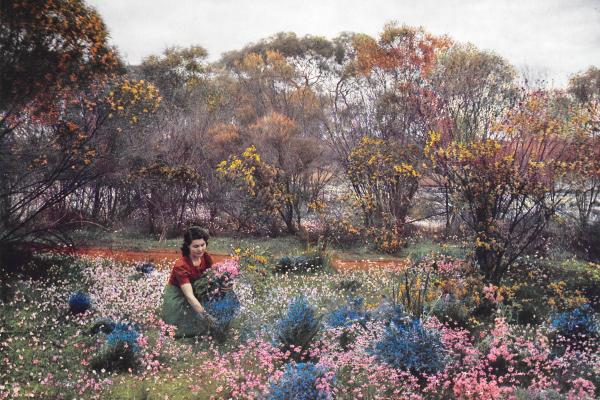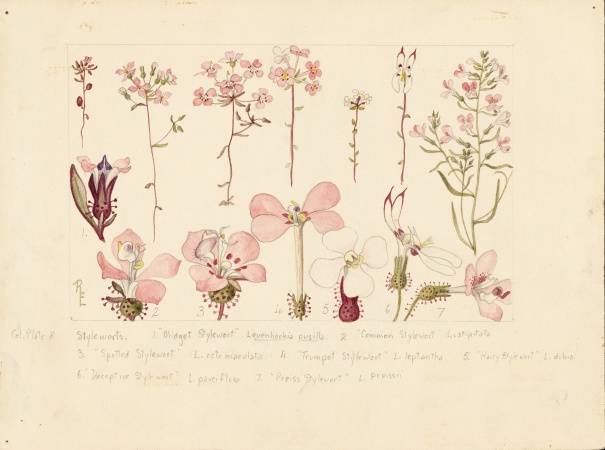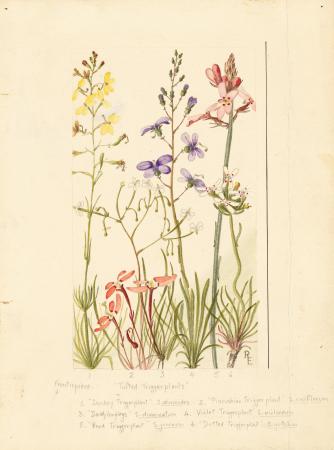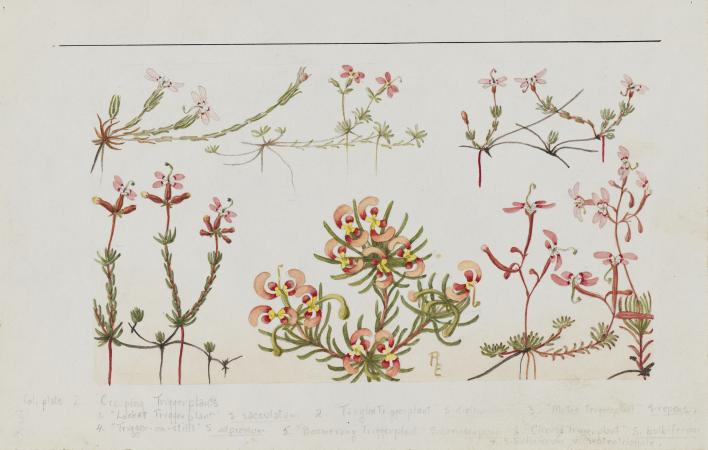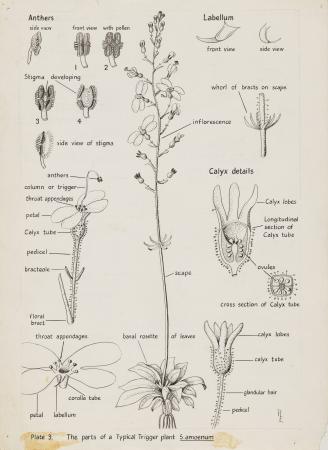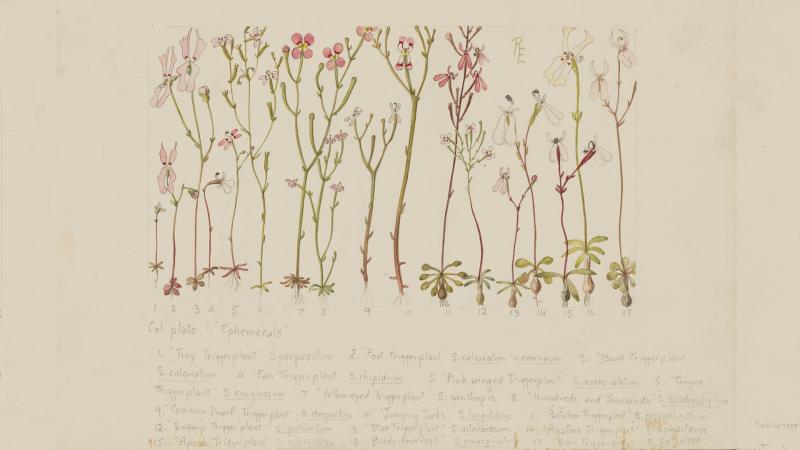
Library lover
A life-long love for research and history meant Dr Rica Erickson was a regular at the State Library.
“I remember going into the State Library when I was very young,” says the naturalist, botanical artist, historian, writer and genealogist in a Battye Library oral history. “It must have been while I was at training college – 1926 or ’27 – and this HUGE building with galleries of books all the way around it, and staircases, a little spiral staircase to get up to them – and there I was in my seventh heaven except that I couldn’t read the lot.
“When we came to live in Perth, and even before, I used to go to that little Battye Library, and when I came to Perth I practically lived in it (especially when I was working on various histories and our dictionaries) and felt quite lost when we moved over to the new library.”
Dr Erickson developed an intense awareness of the need to research and record the early history of Western Australia and to preserve original material before it was lost or destroyed.
Upon retirement to Perth, one of the benefits of living in the city was being able to visit the Battye Library as often as she liked. It was then that she had the resources to spend more time on the projects she had been working on, such as the local histories of the Toodyay and Victoria Plains districts and a biography of the first government botanist, James Drummond.
The Battye Library’s Rica Erickson Botanical Collection features much of her work including her published works, the originals of some of her manuscripts and 500 original watercolour illustrations of Western Australian plants.
Beautiful botanical art
Dr Rica Erickson was well known for her watercolour plant illustrations, which were especially noteworthy for their attention to detail, beauty and scientific accuracy. In the Battye Library, the Rica Erickson Botanical Collection features 500 original watercolour illustrations of Western Australian plants from 1932 – 1992.
Her grandmother’s love of plants began Dr Erickson’s life-long affair with birds, flowers and insects. As a schoolteacher living north of Toodyay, she spent her time studying the wonders of the bush. She connected with experts and through long-term correspondence was able to provide specimens and develop her skills as a naturalist.
Dr Erickson was taught how to make sectional drawings of flowers and obtained a second-hand microscope for plant dissections. She began painting her delicate artworks armed with a sketchbook and a small enamel paint box containing three reds, yellows and blues, a black and an ivory, some extremely fine detail paint brushes, two small water bottles and a magnifying lens.
Known as a naturalist, botanical artist, historian, writer and genealogist, Dr Erickson published several illustrated nature books including one on orchids and plants of prey.
Charting the early days of the colony
Already accomplished in several areas, Dr Rica Erickson decided the decade of her 60’s would focus on genealogy.
She started with a not so small project – the West Australian Biographical Index (WABI) – a collection of historical and genealogical details on settlement in WA from the foundation of the Swan River Colony in 1829 until 1914. Over a decade, information was collected from wide and varied sources such as letters, maps, family trees, photographs, church registers, passenger lists and local almanacs.
In 1987 Dr Erickson was made an honorary life member of the WA Genealogical Society and unanimously elected to the position of Fellow of the Western Australian Genealogical Society in honour of her contribution to the science and the practice of family history.
By then she had been involved in the WABI, edited five printed volumes of the Dictionary of Western Australia 1829 – 1914 and was general editor of the Bicentennial Dictionary of Western Australians pre 1829 – 1888. Dr Erickson also wrote her own family history in The Misfortunes of Phoebe, about her maternal great-grandmother who migrated to Australia during the 1850s goldrush.
A life-long love for history
In a life which spanned more than a century, Dr Rica Erickson’s historical research resulted in more than half a dozen published books.
Dr Erickson’s research led her to specialise in local history, biographies and genealogy and to the publishing of her research. She was also involved in history work for the Toodyay Gaol, the WA Naturalists’ Club and the Country Women’s Association.
Particularly well known for her work on Western Australia’s convict past, while pursuing historical research it was through her work in genealogy that Dr Erickson would ultimately make her greatest contribution with the compilation of biographical dictionaries.
Known as a naturalist, botanical artist, historian, writer and genealogist, The Battye Library’s Rica Erickson Botanical Collection features much of her work including published works and the originals of some of her manuscripts.
"I don't know that I'm any different than anyone else except that I'm tenacious. Perhaps that's it. I've got curiosity about what I'm interested in. I'm tenacious and also, I think, instinctively when things are presented to me; I know which one to grab on to. I think you've got to be aware of what you want to do and then not be afraid to grasp the opportunity. You see, other people who would have read in Emily Pelloe's book that a certain red back to a leaf was interesting because it might be a different species, would just leave it at that. But I had the temerity (cheek, I suppose and yet it was a kind of innocence) to think that if I had found out something and they didn't and they wanted to know, I could tell them - I'd be happy to share. I always wanted to share things. I suppose you could just say it was tenacity - and the ability. Also there must have been some luck in what was presented to me. But if I hadn't grabbed the opportunity as it came I would never have done it.
If anyone asked me to live my life over again I'd say no, because I'd never be sure I'd take the right step at the right time. I might never have done this."
The above quote is from an interview with Rica which you can listen to on the State Library Catalogue.
You may also be interested in...
